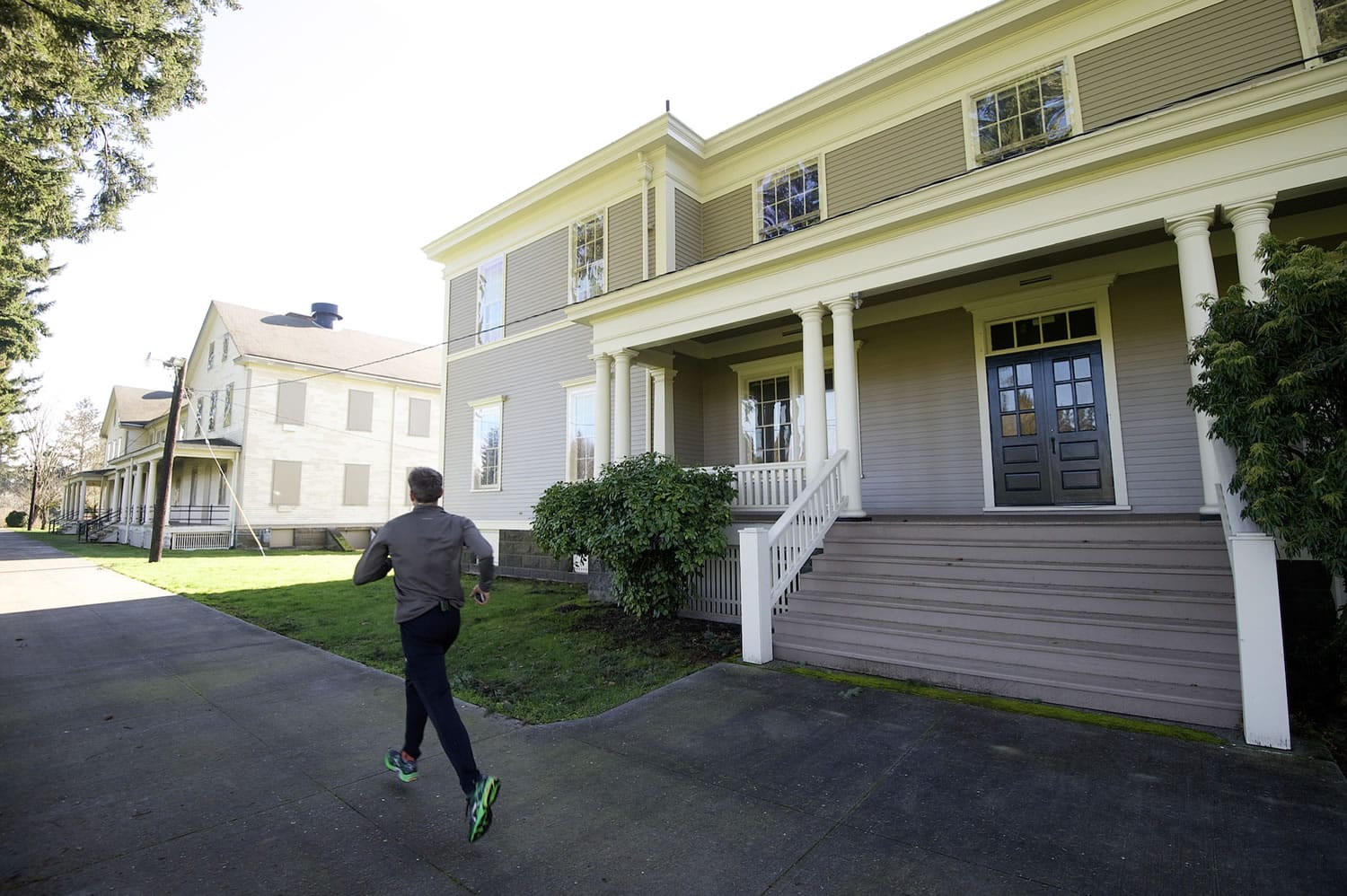The project will focus on the double-sized infantry barracks buildings that form three-quarters of what’s known informally as the “front row,” on the south side of the Parade Ground. A smaller, modern building on the south end of the barracks will also be renovated. Total cost is estimated at $10 million to $14 million, all from government funds.
Tracy Fortmann, superintendent of Fort Vancouver National Historic Site, calls the century-old front-row structures “the iconic image of Vancouver Barracks.”
Built to house 180 soldiers apiece, they face Evergreen Boulevard, which has some landmark architecture of its own.
“Officers Row is across the street, but the core of Vancouver Barracks was the enlisted men,” Fortmann said.
The building at the west end of the barracks series, across the street from the O.O. Howard House, will become the headquarters of the Gifford Pinchot National Forest. That means Building 987, as it is officially inventoried, will be renovated inside and out.
Interior work will include creating office space for 90 to 100 Forest Service personnel. Modern interior walls and other recent alterations will be removed to re-create a more historically authentic layout and a more open, accessible floor plan.
The building served as the headquarters of the U.S. Army Reserve’s 104th Division until 2010.
The national forest currently is headquartered at 10600 N.E. 51st Circle in Orchards, in the shadow of the Interstate 205-state Highway 500 interchange.
“Our agency and forest will benefit from the higher visibility” at Fort Vancouver, Janine Clayton, forest supervisor, said in a news release.
All three large double-barracks buildings will get much-needed exterior work, said Ray Cozby, the Park Service’s regional project manager. That includes new roofs, paint and repairs on the buildings’ exterior envelopes.
The other building in the front row has already undergone an exterior renovation. A 2013 rehabilitation of that building provided a preview of the work to be done on the double barracks buildings.
Known as the Post Headquarters, it’s a much smaller building. The project came in under its budget estimate of $275,000.
Other elements of the project will have less visual impact. Gifford Pinchot National Forest also will lease the modern brick structure in the south portion of Vancouver Barracks.
Building 404, on the south side of East Fifth Street, will be converted into a regional radio dispatch center. It previously was an Army vehicle maintenance shop.
The National Park Service hopes that some of its renovated space will eventually be leased to private businesses for office or retail use.
There also will be some significant below-the-ground upgrades, including a new water main as well as wastewater and stormwater systems.
“If all goes well, we should be seeing activity this summer,” Cozby said. Gifford Pinchot officials anticipate moving into their new headquarters in the spring of 2016, Cozby said.
The National Park Service will provide most of the funding. The Forest Service is a key because of its financial contribution to the project. The U.S. Army — which had overseen the post for 162 years — will provide some money “for repairs they knew they were leaving behind,” Cozby said.




